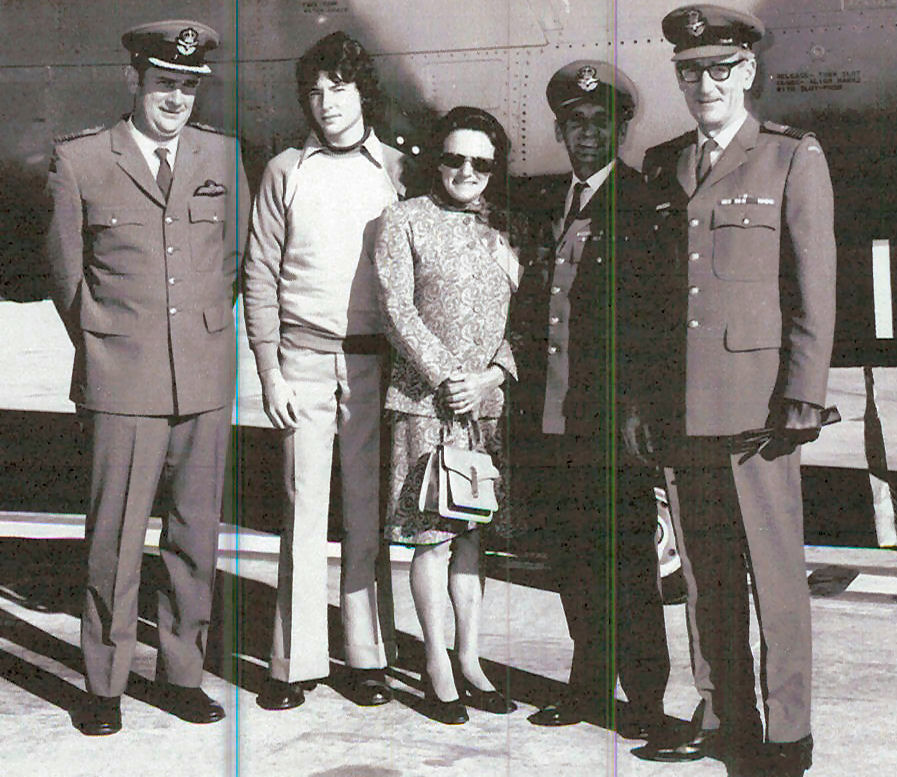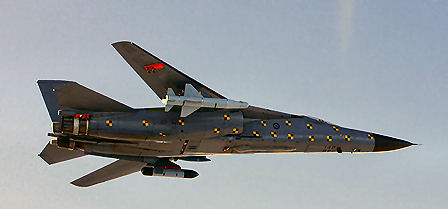|
|
|||
|
Privacy Policy | Editorial Policy | Profit Policy | Join the Association | List of Members | Contact us | Index | Links |
|||
|
Back Go to page: 1 2 3 4 5 6 7 8 9 10 11 12 13 14 15 16 17 18 19 20 Forward |
|||
|
My Story.
|
|||
|
|
|||
|
Wg Cdr RAAF (Ret) Reginald William Rockliff (Rocky).
Rocky was born in West Midland, West Australia, on the 22nd October, 1922. He went to school at the Katanning State School and left when he was 15 after finishing 9th grade. This gave him the Junior Certificate. He started work as a messenger boy for the WA Government at the Treasury Building and at age 17 was promoted to junior clerk at the WA Gov’t stores. In 1941, with the War on and at age 19, he was called up for “6 bob-a-day” service with the Australian Army Service Corps (AASC) and was stationed at the Claremont Show Grounds as a driver with the 5th Motor Ambulance Convoy.
In 1942 he transferred to the RAAF and was posted to No 1 Engineering School at Ascot Vale in Melbourne from which he graduated as an engine mechanic. After graduation, he was posted back west to 1SFTS at Geraldton to work on the Ansons and Tiger Moths. He had now reached the rank of AC and his pay had nearly doubled to “10 bob-a-day” so he thought he was in Heaven.
LAC Rockliff (on ladder) with LAC Ken Wood. Note the up to date GSE. (about 1950)
After only 4 months at Geraldton, he was sent back east to Engineering School and graduated as a Fitter IIE (Sumpie). This was followed by a posting to the Astro-Navigation school (2ANS) at Nhill in Victoria then in 1943 he was posted to Point Cook where, for 3 months, he did nothing but change spark plugs. After being able to change a plug with his eyes shut, they gave him a reprieve and set him up overhauling Air Compressors followed by another posting to RAAF Tocumwal to work on the proposed overseas transport squadrons’ Dakota aircraft. In 1944 the proposed transport squadrons were cancelled and the personnel and aircraft were absorbed into 7AD which then was servicing Beauforts, Liberators and Dakotas.
In 1946, with WW2 just a sad memory, the ADF was in demob mode and Rocky was posted back to Perth for discharge. He went to work for the Commonwealth Oil Refinery (COR) a Government enterprise which was sold to the Anglo-Iranian Oil Company, which, in 1954, became the British Petroleum Company (BP).
In 1949 the ADF had realised their de-mob policy had starved the Services of many valuable men and it began enlisting again. Rocky applied and was accepted as an LAC Engine Fitter (Sumpie). He was posted to 25 Squadron at Pearce which was equipped with Mustangs, Wirraways, Tiger Moths, Ansons and Oxfords and he was given the job of looking after the Ansons which were staged on cross country flights.
In 1951 he was sent on Detachment to 34 Squadron which was at the base at Mallala in South Australia. It was here he first met Merv "Avro" Anson, a pilot, who remained a good friend while in the RAAF and for many years afterwards until his (Merv's) death in 2013. Mallala was originally the home of No 6 Service Flying Training School during World War II and was later selected as the temporary base for flight test and transport support for the joint UK-Australian Weapons Research Establishment at Woomera. After the construction of the Base at Edinburgh in the mid-1950s, Mallala housed No 24 (City of Adelaide) Squadron until the final closure of the base in May 1960.
At Mallala Rocky was set to work servicing the engines on 34 Sqn’s four Bristol Freighters and on occasion, detached to the Rocket Range for engine changes on Lincoln Aircraft. From there he was posted to Engine Repair Section (ERS) at 1AD at Laverton which was run by Sqn Ldr Ron Lavers, a well known and well regarded bloke, one of the pre war "driver pilots" who was good at flying straight and level but not to good at the take of and landing bits. From Laverton, he was sent on a temporary posting to Tocumwal, to Detachment B, where the only vacant accommodation was a vacant officer quarters (separate house) which he immediately grabbed. He converted the temporary posting to a permanent one and was then able to move his family (wife and 2 year old son) up from Melbourne. He did and passed his promotion exams and got his Corporals and was put in charge of preserving aircraft engines in storage. At the same time, he was given instruction and then licensed to drive all vehicles on the base and was made the NCO/IC of welfare and the operator/custodian of the trial Airman’s Bar. In 1954, he passed his Sergeants’ exam and shortly afterwards got his third hook and was posted back to 1AD at Laverton just in time to welcome their second son to the family.
In 1954, he and a few mates were sent to hanger 88 and selected to work solely on jet aircraft such as the Sabre, the Canberra, Vampire and Meteor and it was here he met another life long mate, WOff Joe Langlands (Jumpy Joe) who, until his death in 2008, remained a good friend and colleague.
In 1955 Rocky and wife Joy welcomed their third son.
In 1958 he was sent down to East Sale for a month’s training then posted to 1AFTS at Pearce where he was to work for Wng Cdr Ron Lavers once again. Ron figured that Rocky knew his way around engines and stuff and put him in charge of inspection of Goblin Impeller Blades using an intrascope and in 1959 he was promoted to Flt Sgt.
In 1960 it was time to head east again and he was posted to HQ Support Command to work in the spares accessing section and because of his knowledge and work on Sabre aircraft, he was given the Sabre spares desk, once again, with Ron Lavers as his CO.
In 1961, he was persuaded to accept a commission in the Engineering Branch and was posted to OTS at Pt Cook where he was joined on course by a mix of male and female senior NCO’s. On course they removed all rank insignia, mounted a white flash on the shoulder, an Officer’s badge on the cap, were denied entry to the Sergeant’s Mess and were given only restricted access to the Officers’ Mess. On completion of the course, he was posted back to Support Command with the appointment of Air Eng 1A4 – which meant he was responsible for airframe maintenance on Vampires, Dakotas, Winjeels, Meteors and Caribou aircraft.
While he was at HQSC, the Red Sale aerobatic team had crashed at East Sale and he was seconded to the Directorate for Flying Safety (DFS) and sent to East Sale to investigate the terrible accident. There was a problem in the Vampire with the brake adjustment pedals which used to jam. This was subsequently fixed and subsequently he led the modification team that saw the introduction of the DC3 wing attachment mod. This was carried out to avoid the loss of a wing in flight which had occurred in the USA.
He also found time to swat for then sit for and pass his promotion exams.
In 1965, as a Flight Lieutenant, he was sent on detachment to 38 Sqn at Richmond for familiarisation on the Caribou aircraft before being posted to RTFV/35 Sqn in Vietnam as the Squadron EngO. He was issued with an official passport and decked out in Civvy clothes and arrived in Vung Tau in April 1965 to relieve Sqn Ldr Robin “Chummy” Wade. In 1965 there was no accommodation for RAAF personnel on the airfield and arrangements had been made to house the blokes in Villas in Vung Tau. Blokes were paid an extra US$2.50 per day to offset the cost of meals though the Villa Anna (Officers’ quarters) did have a very good kitchen, not so the Airman who fared much worse.
Vung Tau was a mish-mash early in the piece, the RAAF were attached to the US Army, their missions were organised by the USAF, the US Navy picked up the tab for all costs and the airfield at Vung Tau was commanded by a US Marine Corps Major. Pay went a long way – most ‘niceties’ were very cheap, you could obtain an excellent sea-food meal at Back Beach for next to nothing and the organised Sunday Bar-B-q’s were very well catered for and attended. VB and/or XXXX beer cost $1.10 a slab, a 26oz bottle of Johnny Walker was only $1.10 and a carton of smokes would also set you back the magic $1.10.
What was even better, these prices were in US dollars, paid in Military Payment Certificates (MPC) and at the time the Australian Dollars was worth US$1.12.
RTFV had a compliment of 6 aircraft, which allowed it to meet the daily USAF commitment of one aircraft to Danang, one to Nha Trang and two to the Delta region. This was the work load for six days each week, giving the Squadron one spare aircraft and one always in the hangar on either a C or a D.
Early in 1965, RTFV lost two aircraft. The first, A4-173, touched down just short of the very short strip at Hai Yen, collapsing the starboard undercarriage and the subsequent crash damaged the starboard wing and propeller. After ascertaining that a replacement wing could be obtained on loan from the US Army a composite crew of RAAF and US Army aviation personnel, with spares and the necessary ground support equipment (GSE), was flown to Hai Yen. The aircraft was successfully recovered to base after 7 days concentrated effort where the loaned wing was removed and returned to the US Army and a new wing installed.
The second event occurred a couple of days after the Hai Yen event and involved A4-171. After landing at another remote and very short strip near the Cambodian border and while back-tracking the runway, the twin nose wheels sank into a filled-in water course, sheared backwards and collapsed the aircraft onto its nose. Again, with the support of the US Army aviation regiment, a selection of RAAF and US Army personnel were flown in by chopper and the aircraft was recovered the same day. As a new nose section was required to effect full repair of the aircraft, it remained grounded for more than 12 months until the required bits could be obtained from De Havs in Canada. In the meantime, an aircraft from 38 Squadron at Richmond (A4-208) was borrowed to cover the shortfall. Today, A4-173 can be seen with a starboard wing US Army markings at the Aviation Museum at Caloundra, Queensland.
|
|||
|
Words with 2 meanings:
VULNERABLE (vul-ne-ra-bel) adj. Female.... Fully opening up one's self emotionally to another. Male.... Playing cricket without a box.
|
|||
|
Rocky says recognition must be made to:
The pic at right was taken by Rocky just after he
arrived by chopper at the site of the A4-173 incident to see what was to be done to get the
plane fixed, how many bods would be
Rocky says after the A4-173 incident, he tried to recommend several of the ground crew blokes for awards of the British Empire Medal (then the only suitable award allowed) but the powers that be allowed only MID’s to be allotted to Flt Sgt Frank Latham (Sumpie) and to Cpl Charlie Downes (Framie).
John Rae, Instrument fitter, RTFV, later commissioned and retired as a Wg Cdr.
The cessation of supply of Pratt and Whitney engines from Australia and the supply of Spartan reconditioned engines from the US Army supply chain plus the fact that they didn’t maintain a “life of part” register was a major concern. RTFV partially overcame the deficiencies with the Spartans by spending many man-hours checking every nut and bolt before placing the engine into its mount and refusing to accept replacement spares if there was any doubt as to their condition. The fact that the US Army didn’t allow for mandatory engine oil changes at specified hourly intervals and used the massive electrode spark plugs instead of the platinum pointed plugs was also a concern. Another aspect of the US Army’s procedures that did not go down well with the RAAF was the fact they did not adequately mark their refuel rigs to ensure different fuel blends would or could not occur, very unprofessional when compared to RAAF standards.
Rocky says an interesting event occurred in 1965 when 4 star General William Westmorland paid a visit to RTFV HQ accompanied by a bevy of lesser Generals, Colonels, photographers and newsmen. Westmorland was very interested to learn of RTFV’s achievements and asked Rocky how many Caribou aircraft the RAAF had on station. He was informed there were 6 in total, with 4 committed each day. He then asked what was the situation with the US 21st Aviation Company which was positioned next to the RAAF Caribous on Vung Tau airfield and was told that of the 20 aircraft they had on strength, their daily flying average was only 3 to 5 aircraft. This didn’t amuse him at all, he demanded the presence of 21st Aviation’s CO, EXO and other titled people and promptly sacked them on the spot.
As the Base at Vung Tau was a huge US forces base, it was decided the best thing to do was to take some of granny’s advice, “If you can’t beat ‘em, join ‘em” so RTFV personnel started to wear base-ball hats which bore one’s rank as did the Americans. Rocky was a Flight Lieutenant at the time so he wore the equivalent US Captains’ rank of two bars on his cap. This seemed to work well except for the RAAF Warrant Officers whose rank was indicated by the crown and wings which looked awfully like the US Full Colonel’s (Bird Colonel) badge and consequently drew quite a lot of salutes from the US Service people. The WOE at the time was George McLean who wouldn’t play ball and return the salute which nearly always meant the US bods would hold their salute for some time expecting George to reciprocate. Poor old George must have had sore ribs from constantly copping Rocky’s elbow with a hissed “Salute back George or we’ll be here all bloody day.”
The Villa Anna, where the officers used to live, was a two storied building which faced the South China Sea. |
|||
|
|
|||
|
Rocky occupied a room facing the sea on the upper floor. Downstairs
there was a bar/club room that allowed access from the front and rear of
the building and which was decorated with
Playboy Centre-folds on one wall and directly opposite with pictures
of the Queen and Prince Philip accompanied by the appropriate Australian
Flags. In the roof structure above,
While in Vietnam, AVM Hey discussed the possibility of doing the Caribou E Services in country instead of using US Army resources. Rocky was given the job of investigating whether the job could be done by Air Vietnam and after visiting and inspecting their facilities he was satisfied that it could be done as their tech people were suitably qualified to undertake such a job under direction from RTFV tech staff. He wrote an E Service schedule and placed the necessary papers with the Americans to have the first E carried out in Country. Rocky and Sgt Graham Buttler (Framie) would periodically visit the Air Vietnam work-shops to check on progress and eventually the finished aircraft was wheeled out and flew without one unserviceability. Subsequent aircraft were also serviced at Air Vietnam to a formally produced E Servicing Schedule which was based on Rocky’s original sheets.
ENTERTAINMENT (en-ter-tayn-ment) n. Female.... A good movie, concert, play or book. Male...... Anything that can be done while drinking beer.
While at RTFV Rocky was “lucky enough” to get to know a bloke who was a
French-Canadian engineer with DeHavilland Canada – the makers of the
Caribou. His name was Jacques Lorioux and he was present at all the
trials conducted on the Caribou at places
In December 1965 he boarded the Freedom Bird and returned to Australia to take over as SEngO at 38 Sqn at Richmond.
Rocky remembers his time in Vietnam fondly. He says, “Apart from two isolated minor incidents concerning two senior NCO’s, I could not have been associated with a better crew. Not only did we maintain our aircraft and equipment wonderfully but at times the Americans borrowed our service personnel to make up for their deficiencies in all trades. Some of our blokes returned in civvy life to contracts in Vietnam with the US Services.”
In January 1968 Rocky was promoted to Sqn Ldr and posted to the RAAF School of Technical Training (RSTT) at Wagga as the OIC Mechanical Trades Squadron (MTS). Initially he was sad to leave 38 Sqn but gradually got to love being associated with adult and apprentice trainees. He says he learned a lot at Wagga. While he was there, there was an incident where senior NCO’s were given a supervisory job over young apprentices who were detailed to work at preparing and serving food and after they had completed the washing and cleaning-up afterwards, got stuck into the liquor they had spirited away under the noses of the supervisory NCO’s. Being drunk they started to riot and caused extensive damage to several buildings.
An incident occurred the night before the normal Tuesday morning
parade. Wagga can turn on some pretty terrible weather in winter and
this morning was no exception. The fog was a ‘pea-souper’ with
visibility down to dot feet so the parade was cancelled. When the
The OC hit the roof.
As Rocky was the Base Engineer as well as the OIC MTS he was sent for and told in no uncertain terms to:
Initially he had no idea how it had got there, it couldn’t be towed down the main drag as there were too many trees yet that was the only possible way it could have come. There were no engines in the nacelles and no fuel in the aircraft so it had not been driven there under its own steam, so what was the answer?? It did occur to Rocky that perhaps it had been carried but by whom and when and who had organised it and why. Eventually it was carried manually back to its resting place at the front gate however, try as he might, he was not able to break the Appy code of silence and it is still a mystery to this day.
Now that a lot of water has passed under the bridge, if you know anything about it, Rocky would love to know…..
Another memorable incident involved the Tumbarumba Express. This was a
rail motor that ran once a week from Wagga out to Tumbarumba, a journey
of about 110 klms. The rail line ran through the base itself and ran alongside a 3 storied Appy block.
At this time the dress rules on Base included short back and sides and most of the young blokes, when venturing into Wagga itself, would don a wig to try and fit in with the locals and not identify themselves as either RAAF or Army – whether the local female population were stupid enough to fall for that was anyone’s guess.
Later in 1970 Rocky was offered acting rank of Wg Cdr and a posting to Dep Air with appointment of MP2 and the primary duty of looking after and provisioning buildings and work-shops that were connected with aircraft, this would include hangars, flight line buildings, run-up bays etc. It was also decided to introduce standardisation of work benches and Rocky was elected as the RAAF representative on an inter-service aircraft standardisation committee.
This was the time when there was a lot of talk about the future of bases such as Pt Cook, Laverton, Richmond and Fairbairn, where to best base the Iroquois and the Caribous that were leaving Richmond and those returning from Vietnam and what to do about the deficiencies at Amberley.
It was plain to all that a new huge hangar was urgently needed at Amberley to house the expanding 3AD and there was a need for new workshops for engine overhaul as well as flight line structures and workshops and a hangar capable of having tail-gate access for the Caribou fins. |
|||
|
|
|||
|
The job necessitated visits to every base in the RAAF and the raising and completion of a host of Air Force documents covering the design specifications of required buildings in time for action to be taken by the appropriate authorities. Further, the RAAF desperately needed a centralised air conditioned aircraft paint shop.
Late in 1974 Rocky, who was approaching due retirement age of 55 (due in Oct 1977), asked for and got a posting to 482 Maintenance Squadron at Amberley, this to be his Swan-song. Back then 1 and 6 Sqns were the flying squadrons (F-111’s) and any maintenance or requirements were handed to 482 Mntce Sqn. The problems associated with the aircraft stemming from the early days were well known by now and had been well and truly sorted and that aircraft had grown into a dependable and reliable machine. Sadly though, in his second year the RAAF lost 2 F-111’s, fatally in one instance and thankfully with no loss of life in the other.
At Sqn Ldr Joe Langlands' retirement parade, Amberley, 1976. L-R: Gp Capt Ted Whitehead (CO 482 Sqn), Joe's son Brad, wife Kit, Joe and Rocky.
F-111 aircraft were often deployed overseas, No 1 Sqn deployed to Hickham AFB in 1975 and again in 1977, spending time at the Marshall Islands on return to Australia. No 6 Sqn deployed to Ohakea AFB in New Zealand for 1 month in 1976. Both also spend time in Butterworth - and Rocky being the EngO made sure he had a seat on the support aircraft.
His last jolly, before leaving the RAAF was to accompany an F-111 in the support Herc to Richmond, Canberra, Laverton, Edinburgh and then Pearce.
In 1975, with a bit of foresight, he and Joy purchased a 5 acre plot of land which was part of a 60 acre dairy farm situated on the outskirts of Lennox head, northern NSW. He had erected two double garages, had power connected to them, then with such modern amenities as a canvas bag shower, portable toilet (take away and empty style) and a 22ft caravan, the Rockliffs survived quite comfortably until their house was built and finished in Dec 1977. The next purchase was a trusty Fergy tractor with a slasher and a carry all which could be fitted to the front and to the back, and with it they planted 500 shrubs and trees.
Rocky (left) shown here fending questions from the NZAF top brass.
To fill in his time, he became a bit of a master at home-brewing the amber fluid then he and Joy got the travel bug and travelled around OZ and he reckons he’s now seen a big part of it. But progress is progress and their lovely rural retreat was gradually being encroached upon and eventually the council rezoned their area from rural to urban and finally they were ground down by the pressure and sold off 4 of their 5 acres. They used the proceeds from the sale to head off overseas and over time travelled through the UK, Western Europe, Americas, Canada, New Zealand, South Africa, Zimbabwe, Middle East, Indonesia, Malaysia, China, Japan, Egypt, and recently through Cambodia and Vietnam.
Unfortunately, during Rocky’s last trip overseas he had a black out
which resulted in a few
When they built their home back in 1977, Rocky obtained an “Owner – builder” license and as the house is built on rising ground, he used the slope to build in a “granny flat” under the front of the house. This includes a double bed room, lounge, kitchen and separate toilet and bathroom and is surrounded by a 12 foot brick patio. This has been a God-send and has been used by a countless number of visiting relations, friends and overseas acquaintances over the years.
Sadly, in 2001 they lost their youngest son, John, to bowel cancer. Over the twenty years between 1990 and 2010, bowel cancer rates have doubled in young Australians 20-29 years and are up by 35% in 30-39 year olds. Australian and international research has shown a worrying global trend towards a higher incidence of bowel cancer in younger people, especially given bowel cancer rates are stabilising or falling in over 50s. However, Rocky strongly advises and encourages all Australians who are aged 50 and over, to undertake bowel cancer screening. You can get a screening kit on line by going HERE.
These days he and Joy have slowed down a lot, no longer is there a need to rise at 5.00am and thankfully God made a heap of tomorrows in which to get the urgent things done. For a period they donated some of their time to meals on wheels, mainly to help those not as fortunate but also to avoid the bowls and/or golf club syndrome. A cream Volvo with two white hats on the back shelf is definitely not their scene. Their 1,270 m2 property plays host to a lot of lawn and these days “the Man” comes in with his mower and a friendly neighbour helps cart the wheelie bins down and back to the front gate.
Having belatedly overcome a hate for EDP, mobile phones and useless chatter on the TV, he purchased a lap top and now maintains regular contact with old mates from his RAAF time. He also assists Vet Affairs in a setup whereby his daily pulse, blood pressure and lung strength are relayed to his GP and Vet Affairs in Brisbane.
At this time in their lives, (both 92 in Sept) Rocky, who is one of nature's gentlemen (with a fair bit of larrikin tossed in), reckons it’s great to be able to sit back on the veranda, enjoy a cold one or two and reflect on life’s wonderful memories.
|
|||
|
|
|||
|
|
|||
|
Back Go to page: 1 2 3 4 5 6 7 8 9 10 11 12 13 14 15 16 17 18 19 20 Forward |
|||
|
|

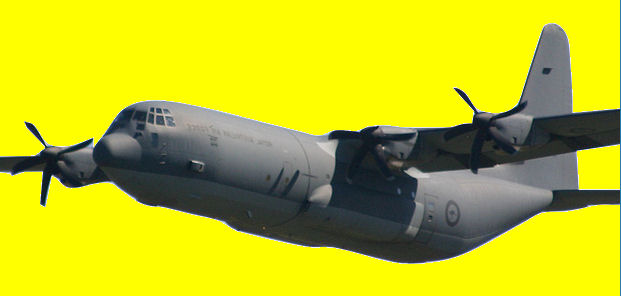

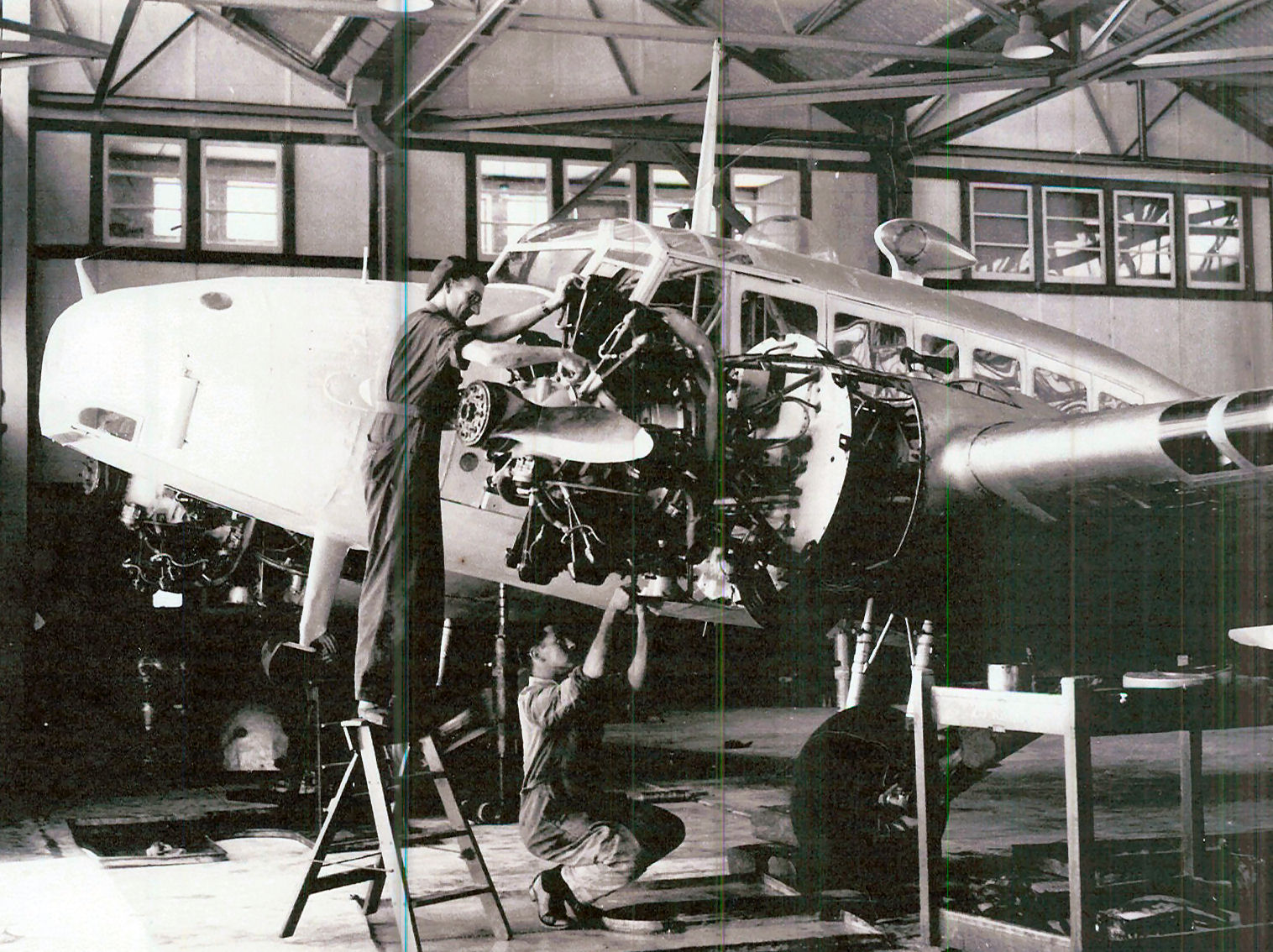
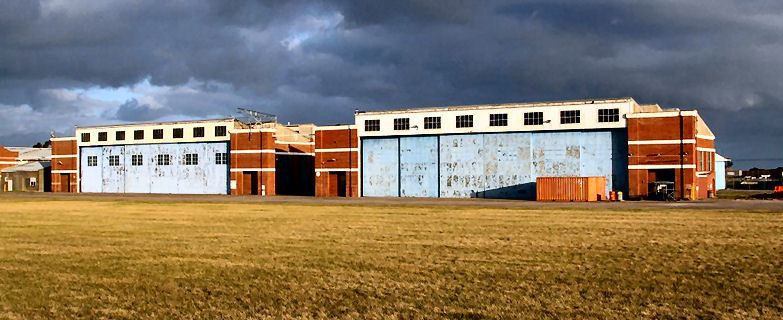
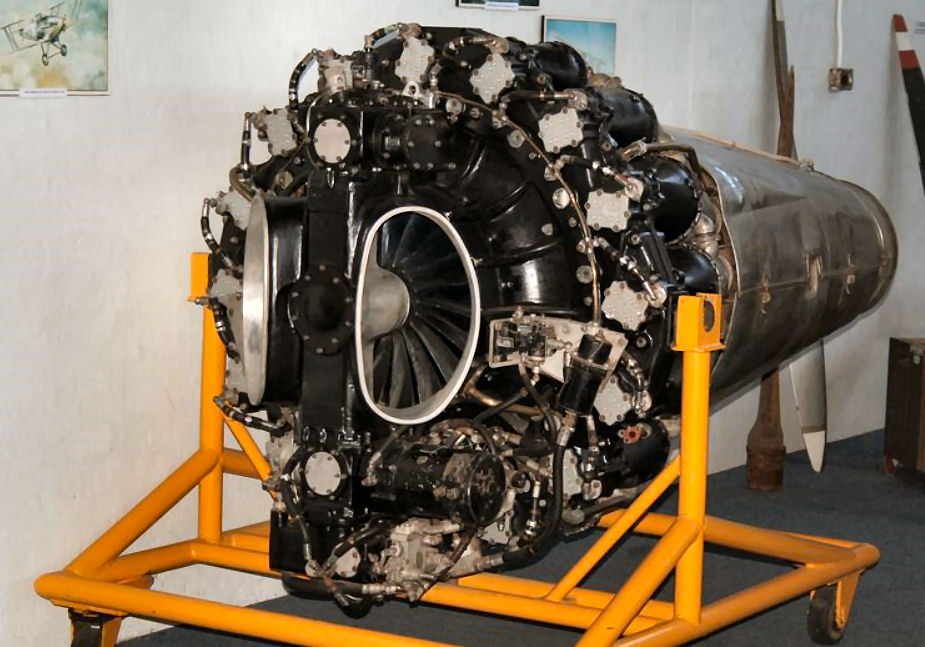
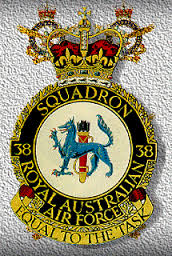
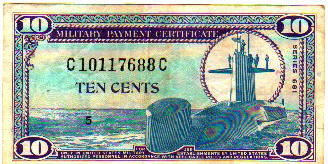
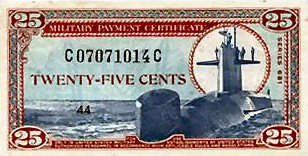
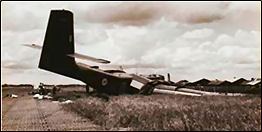 needed, what replacement
parts and to see what GSE was need.
needed, what replacement
parts and to see what GSE was need. .jpg)
.jpg)
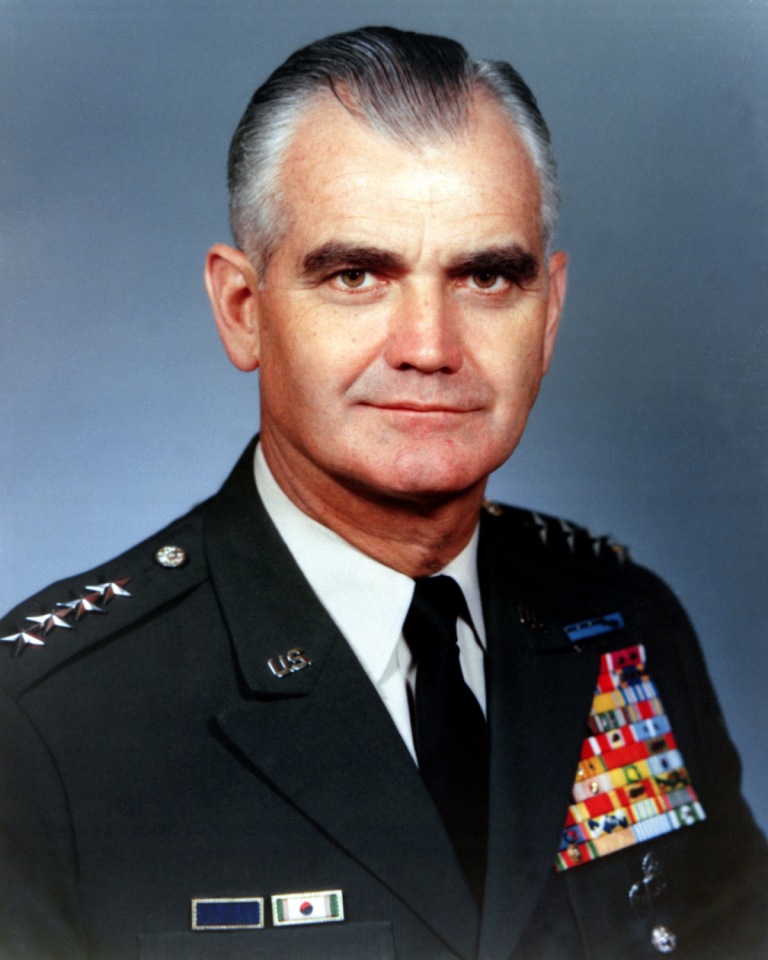
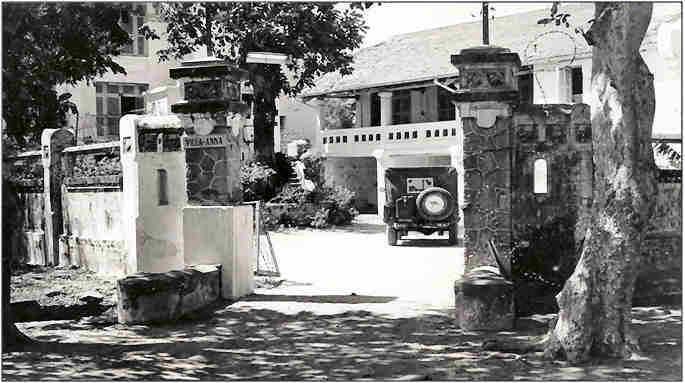
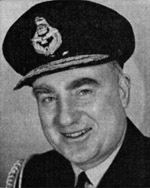 a host of flying bats had settled in and these used to fly out each
night, in two separate groups, in search of food. One evening they had a
visit from the late
a host of flying bats had settled in and these used to fly out each
night, in two separate groups, in search of food. One evening they had a
visit from the late
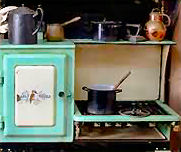 ranging from the Sahara Desert to the Arctic Circle. Jacques was married
to a Vietnamese woman called “Mickey” and they and their maid, Dou Sou,
lived in a block of single story flats in down town Vung Tau. Jacques
loved to entertain and Mickey and Dou Sou loved to cook – the perfect
partnership. They had a Kookaburra gas stove in their kitchen and Dou
Sou would go to the early morning market and get fresh food while Rocky
and his mates would get steaks, beer etc from the PX on base. A bunch of
them were regally and regularly entertained and fed at the Lorioux’s
home, eating wondrous food and listening to Jacque’s tape recorder until
late into the night and because of the late night curfew, they would
often doss down on a mattress size foam with the dogs for company and
sleep until dawn when they would catch an early morning Lambro back to
the Villa for a tub before heading off to work. Many Australians enjoyed
the hospitality of Jacques and his wife “Mickey” and Rocky keeps in
touch with them to this day.
ranging from the Sahara Desert to the Arctic Circle. Jacques was married
to a Vietnamese woman called “Mickey” and they and their maid, Dou Sou,
lived in a block of single story flats in down town Vung Tau. Jacques
loved to entertain and Mickey and Dou Sou loved to cook – the perfect
partnership. They had a Kookaburra gas stove in their kitchen and Dou
Sou would go to the early morning market and get fresh food while Rocky
and his mates would get steaks, beer etc from the PX on base. A bunch of
them were regally and regularly entertained and fed at the Lorioux’s
home, eating wondrous food and listening to Jacque’s tape recorder until
late into the night and because of the late night curfew, they would
often doss down on a mattress size foam with the dogs for company and
sleep until dawn when they would catch an early morning Lambro back to
the Villa for a tub before heading off to work. Many Australians enjoyed
the hospitality of Jacques and his wife “Mickey” and Rocky keeps in
touch with them to this day.